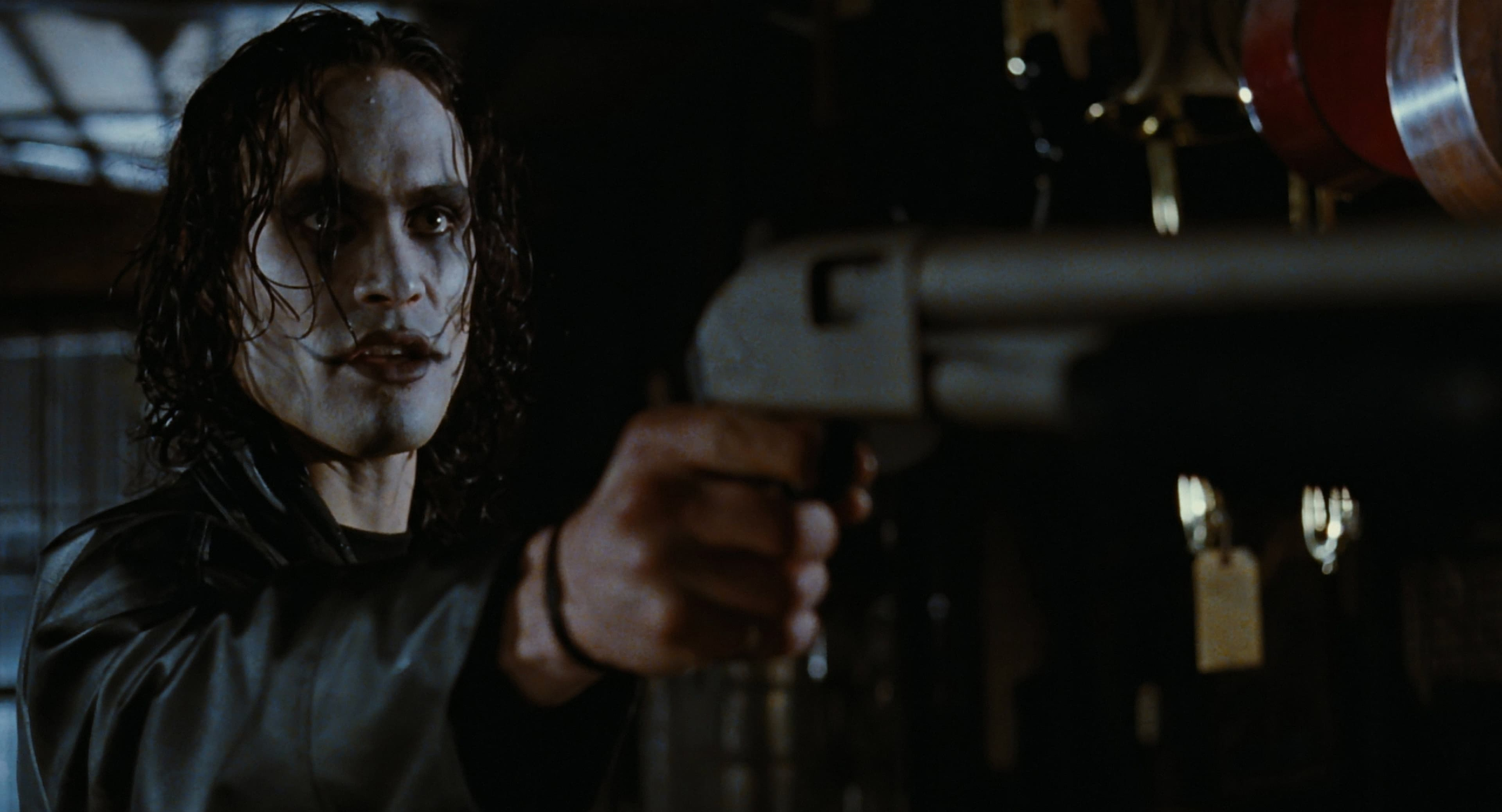The Crow – Film Review
Published February 11, 2024

When Alex Proyas’ The Crow hit the screens in 1994, it faced a fair share of both anticipation and skepticism. The tragic on-set demise of Brandon Lee, its leading star, already enveloped the film with an intense intrigue. In essence, the film turns out to be a darker-than-night, gritty adaptation of James O’Barr‘s graphic novel, mixing supernatural revenge themes with hauntingly gothic visual appeal. There is an understated magnetism and timeless relevancy in The Crow that lingers well beyond the runtime.
One cannot talk about The Crow without highlighting the magnetic screen presence of Brandon Lee. Lee plays Eric Draven, a musician murdered along with his fiancée Shelly, on Devil’s Night. The lines blur between reality and fiction, lending a poignant gravity to Lee’s tragic performance, giving birth to an iconic antihero. Lee exudes both emotional vulnerability and fierce brutality, straddling perfectly between the earthly and otherworldly elements of the character. Although Lee did not live to see the movie’s release, his riveting performance etched a formidable, unforgettable hero in our cinematic consciousness.
However, it’s not only Lee’s powerful acting that shapes The Crow into the gothic cult masterpiece that it is today. The distinctive visual aesthetic plays an integral part in the film’s impact. Alex Proyas and cinematographer Dariusz Wolski have created a near-monochrome dreamscape bathed in shadows and illuminated only by the scant industrial fire and neon lights, which help to make the dark and grungy, rain-drenched city, a significant character itself. Coupled with the graffiti-laden walls and derelict urban landscapes, Proyas successfully turns the whole film into a moving, atmospheric gothic painting.
Beyond aesthetics, the film is tightly-woven with deep-seated metaphysical and existential themes. Draven, returned from death, is on a mission to rectify wrongs inflicted upon him and Shelly. In doing so, Proyas does not merely use this resurrection as a gimmick, but as an opportunity to delve into issues of love, vengeance, and the fine line between life and death.
Proyas also balances his spectacle with some sharp social commentary. By weaving an undertone of social decline, economic disparity, and urban decay throughout the narrative, the film captures a palpable sense of doom and desperation. This somewhat mirrors our contemporary reality, thus providing the story with an enduring relevance despite its release almost three decades ago.
Moreover, The Crow deserves praise for its thrilling and high-energy action sequences. Choreographed with utmost precision and complemented by smart editing, the sequences draw in audiences and heighten the drama. Combined with a soundtrack that perfectly captures the mid-’90s grunge-rock vibe, they amplify the adrenaline rush and fuel the intense pacing of the narrative.
Yet, despite all the praise, it falls short of being a five-star film. Some elements work against the flow. At times, the relentless gloom seems a tad excessive and overbearing, dampening the intended visual shock. While Ernie Hudson gives a laudable performance as a sympathetic cop, other secondary characters appear caricaturish and one-dimensional. This makes the narrative occasionally come across as stereotypical rather than engaging.
Still, such glitches cannot detract from the impact that The Crow had upon its release and continues to have today. Proyas manages to deliver a cult classic, propelled by a fascinatingly layered performance by the late Lee. Through a unique gothic aesthetic, thrilling action, and an equally compelling narrative imbued with social relevance and philosophical undertones, the film created its special niche in the annals of cinema.
Despite some flaws, the lasting power of The Crow continues to affirm the truth in its signature phrase, It can’t rain all the time. Proyas’s gem remains an emotional tribute to love, justice, and its fallen star – Brandon Lee, a testament to his immense potential that the world never got to witness.
